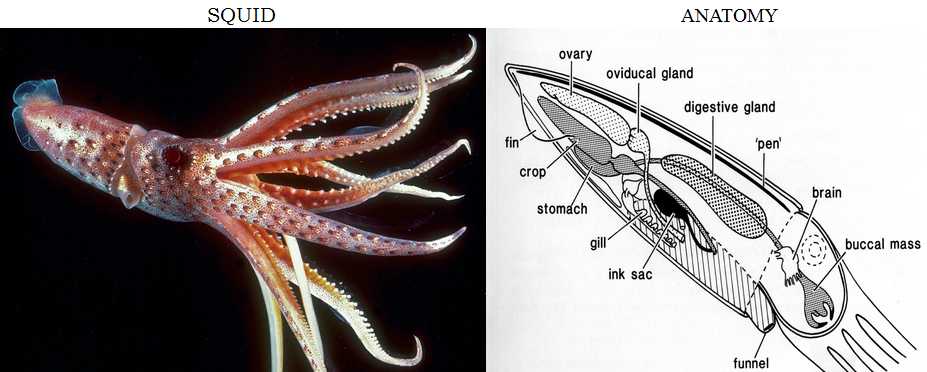163.WHAT IS A SQUID?
In the days when Columbus sailed the seas there were stories told of long-armed monsters that reached out of the water to scuttle ships and pull the sailors down to the depths of the ocean. Such stories were exaggerations. There never were such monsters, and what the sailors probably saw were giant octopuses or giant squid.
Both of these creatures are mollusks, or shellfish. They belong to the class called “Cephalopoda.” This name means “head-footed,” because the foot is divided into long armlike tentacles that grow out around the head.
A typical squid has a long, slender body edged by triangular fins, a short square head with well-developed eyes, and ten arms. On the undersurface of the arms or tentacles, are arranged rows of suckers which are strengthened with tough horny rings. Two of these tentacles are longer and more flexible than the others. The suckers are concentrated at the extremity of the tentacles as a sort of “hand.”
The two long tentacles are used by the squid to capture its prey. The other eight are used to transfer the food to the mouth of the squid or for holding it while it is being crunched by the horny jaws, which are situated around the mouth in the center of the circle of arms.
Deep under the mantle, or skin, lies a horny growth which is something like a shell. This has replaced the true shell which the squid probably had at one time. There are many different kinds of squids, and one of them, the giant squid, is the largest invertebrate on earth, which means the largest animal without a backbone. Some giant squids found in the North Atlantic have been measured to be a length of 16 meters (including the outstretched tentacles). Another group of giant squid measure 2 meters.
The squid, like the octopus and the cuttlefish, can discharge an inklike fluid into the water to hide its whereabouts. One interesting group of squid is phosphorescent, which means it gives off light. The light organs are on the mantle, arms, inside the mantle cavity, and around the eyes. When seen at night, they appear quite beautiful. Other squid called “flying squid,” are able to leap across the surface of the water.



Leave a Reply